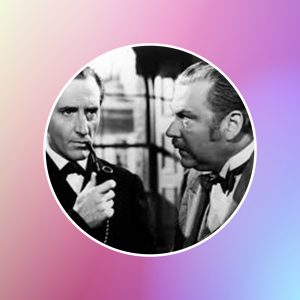What Qualifies Film As Noir


There are a few essential things to consider to determine whether a film is a noir. These factors include budget, cast, and plot.
Characters
Film noir is a genre of cinema that originated in the classical Hollywood period of the late 1940s and early 1950s. Hardboiled literature, gangster films, and German expressionism influenced it. In contrast to mainstream Hollywood films, film noir focuses on trapped and desperate characters.
Noir films are usually dark, have harsh lighting, and feature alleyways, back doors, and upmarket establishments. The main character typically has a specific background and is introduced through first-person narration.
Film noir is also known for its nihilistic themes and its tendency to depict life events in a negative light. It is a very different kind of storytelling and often ends with the protagonist paying the price for the seduction of a femme fatale.
Film noir reflects the uncertainty of the world. A noir universe is unstable, and individuals are trapped by fear, sexual desire, and paranoia.
Plot
Film noir is a genre that depicts a world of nihilism and corruption. It usually features a hardboiled detective or private eye as the protagonist. These characters are often characterized by violence and a dark sense of humor.
Noir films typically end in a climax, with the main character paying the price for manipulating a femme fatale. The ominous shadows of the plot are a significant element in creating societal anxieties.
Film noir is often associated with Humphrey Bogart, whose iconic role in The Big Sleep, Double Indemnity, and Gun Crazy is a prime example. However, film noir has an extensive history and many characters.
A classic film noir is the product of a society transitioning from the 1940s to the 1950s. It has many themes, including nihilism, crime, and moral dilemmas.
Women
Film noir, a recurrent and ambiguous genre, is a great place to explore the nuances of women’s roles in society. Its origins date to the postwar period when economic change and the advent of WWII led to a gender role shift.
The genre has been used for both film and television. This prompted scholars to investigate the meanings of women’s roles in the context of the film. Several adolescent Oxford scholars wrote the book Women in Film Noir, published in 1978. It’s now a classic text for students of film and media studies.
It’s one of the few texts to discuss gender in film. It examines various critical perspectives on the topic, including psychoanalysis, semiotics, political science, and sociology. It also presents feminist perspectives and more recent ideas on the subject.
Budgets
A reasonable budget can be a good time. Taking the time to read a few books about filmmaking will ensure a happier, albeit more expensive, result. Not to mention the satisfaction of knowing you aren’t alone. Whether or not you get out of the gate on time is another matter entirely. As with most things, it is about getting the most bang for your buck. After all, the movie is a big deal, and you’ll only see the best part if you’re not in a hurry. You’ll be treated like a star if you’re lucky enough to get in. This makes the time of year a great time to be in the know! Most studios are looking to get their name on the horizon, so you’ll be able to get the low down on the latest and greatest.
Classic-era films noir
Classic-era films noir are dark detective movies. They have a high degree of moral ambiguity. This is evident in their titles. Some are based on true stories, and others are fictional.
These films were created during and after World War II, when a sense of uncertainty prevailed throughout the country. The looming threat of nuclear war provided an added element of dread.
Many of the best classic-era film noirs were based on or influenced by pulp crime novels. These often centered on a misogynistic male character and had an almost cynical outlook on life.
The noir genre also influenced the French New Wave filmmakers. Jean-Luc Godard, Francois Truffaut, and Francis Ford Coppola all displayed noir cinematography in their works.
Aside from the stereotypical “hardboiled detective,” classic-era films noir are characterized by moral corruption and disillusionment. During the 1930s, a heightened sense of pessimism swept across the American psyche, and the film noir style continued to deal with these themes.
